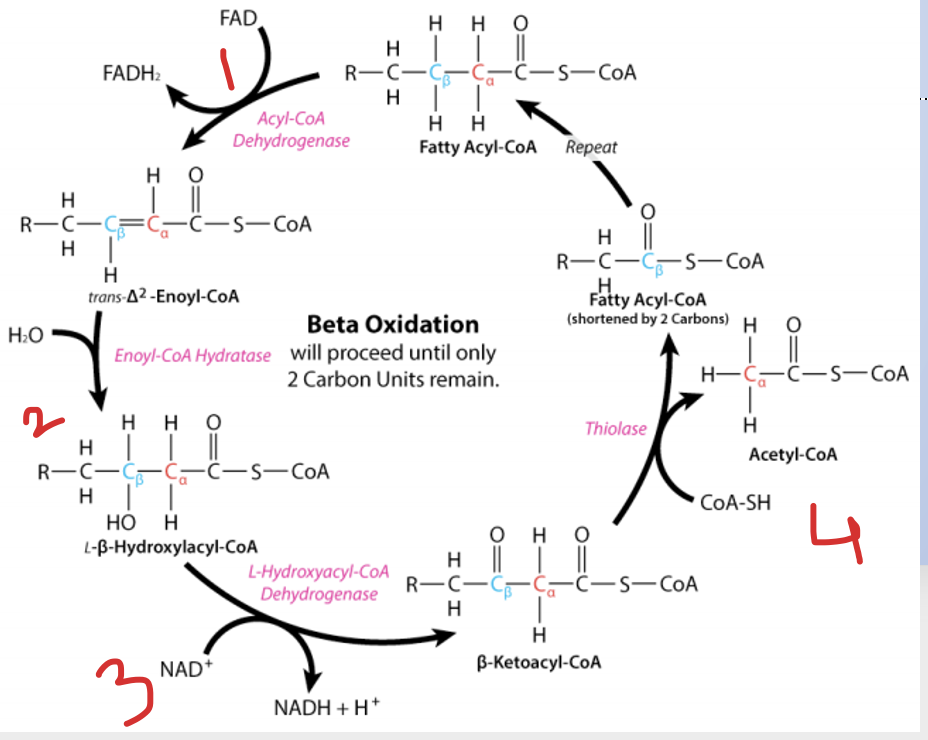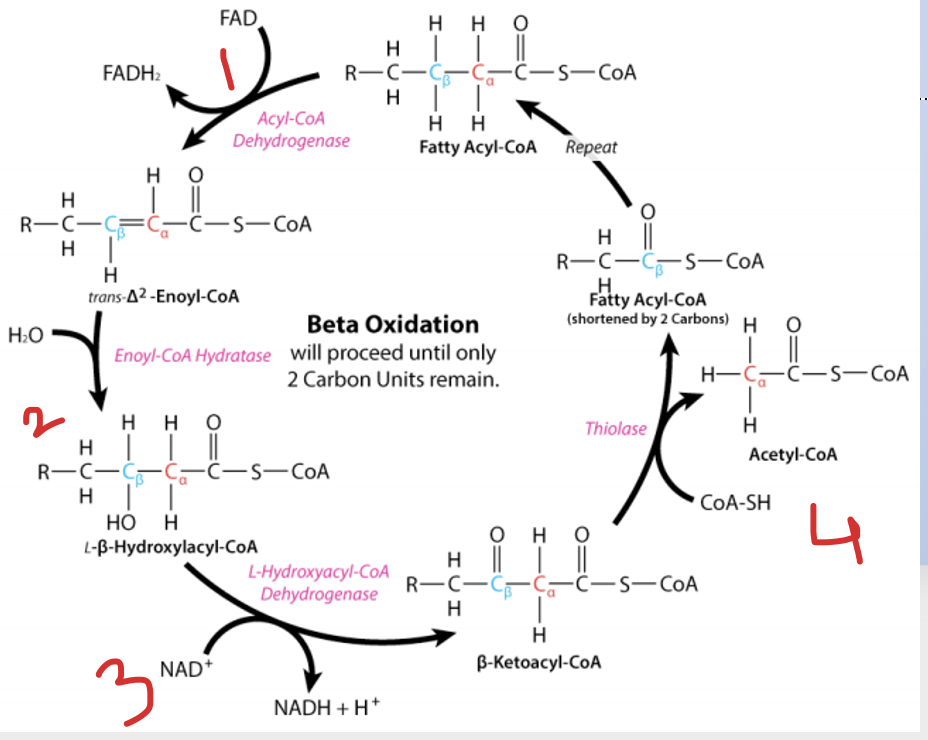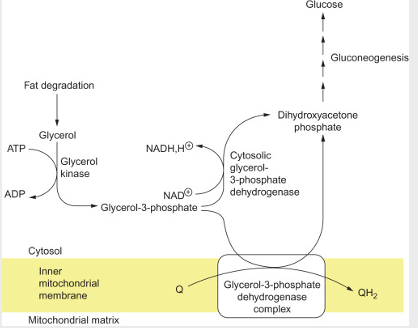β-oxidation and glycerol catabolism
1/13
There's no tags or description
Looks like no tags are added yet.
Name | Mastery | Learn | Test | Matching | Spaced |
|---|
No study sessions yet.
14 Terms
Where does β-oxidation occur
mitochondria
What is the purpose of b-oxidation
The purpose of beta-oxidation is to break down fatty acids into acetyl-CoA molecules, which can then enter the citric acid cycle to produce energy in the form of ATP.
What does each rounds of oxidation remove ?
two carbons at a time to produce acetyl-CoA
For the 16C palmitic acid . What happens when it undergoes β-oxidatio ?
7th round leaves C16 as acetyl-CoA
Produces eight acetyl-CoA molecules
What happens when Fatty acyl-CoA enters mitochondria ?
Converted to the coenzyme fatty acyl-CoA by acyl-CoA synthetases
Where C2 is Cβ AND Cα is C3 (functional groups) .
What is the first step of β-oxidation
The first step of β-oxidation is the conversion of a fatty acyl-CoA to a trans-Δ2-enoyl-CoA by acyl-CoA dehydrogenase.
FAD→ FADH2

What are the 3 isozymes of acyl-CoA dehydrogenase ?
oVery-long-chain acyl-CoA dehydrogenase (VLCAD) acts on 12C-18C fatty acyl-CoA
oMedium-chain acyl-CoA dehydrogenase (MCAD) acts on 4C-14C fatty acyl-CoA
oShort-chain acyl-CoA dehydrogenase (SCAD) acts on 4C-8C fatty acyl-CoA
What is the second step of β-oxidation
The second step of β-oxidation is hydration, where double bond of trans-Δ2-enoyl-CoA is converted to a β-hydroxyacyl-CoA by the enzyme enoyl-CoA hydratase.

What is the third step of β-oxidation ?
β-hydroxyacyl-CoA is dehydrogenated to β-ketoacyl-CoA
Catalysed by β-hydroxyacyl-CoA dehydrogenase
NAD+ → NADH

What is the fourth step of β-oxidation ?
Thiolase joins β-ketoacyl-CoA with a free CoA molecule
Causing the binding and splitting of the 2C fragment
Making acetyl-CoA and a truncated fatty acyl-Co

What is made at the end of ONE round of β-oxidation ?
o1 NADH
o1 FADH2
o1 acetyl-CoA
What is made when 16C palmitic acid undergoes seven rounds of β-oxidation ?
o7 NADH
o7 FADH2
o8 acetyl-CoA
The acetyl-CoA molecules produce a further
-24 NADH
-8 FADH2
-8 GTP
•Total product from palmitic acid is 31 NADH, 15 FADH2, and 8 GTP
How many ATP are made in total from the oxidation of 16C?
108
2 are used to activate B-Oxidation
so 106
Describe the process of glycerol catabolism
Glycerol Catabolism Process:
Glycerol is converted to glycerol-3-phosphate.
Glycerol-3-phosphate is oxidized to dihydroxyacetone phosphate.by Glycerol-3-phosphate dehydrogenase
Dihydroxyacetone phosphate converted to glyceraldehyde-3-phosphate (G3P). Produces NADH
ATP is generated through glycolysis.
